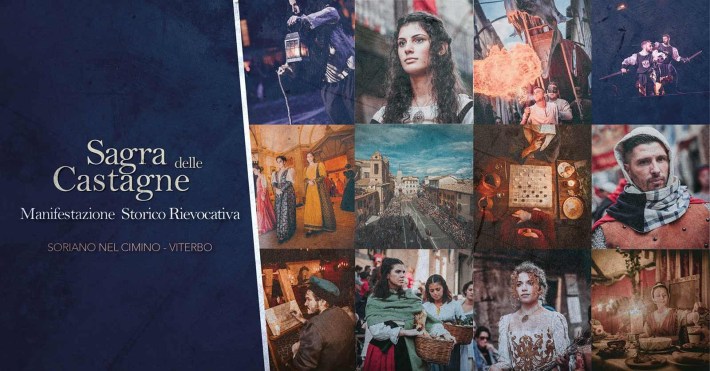Italy’s endless culinary wonderland offers yet another gem known as la sagra. Usually running for one or two weekends, a sagra is a food festival, celebrating local traditions, ingredients or recipes. In every region, even in the tiniest village, sagre take place from April through November.
These festivals are usually run by local groups, clubs, churches, or entire towns. Many have ancient roots, while new ones pop up like porcini every season.
No two sagre are created equally. Some take place in medieval towns or under umbrella pines by the coast, while others unfold in lackluster sports clubs or under plastic tents in fields or town squares. The festivities go beyond food itself, and there are often raffles, live music, and couples dancing a ballo liscio.

La Sagra delle Ciliegie di Lari, a Tuscan cherry festival, has filled the winding streets of this quaint hill town every May for 65 years. Carts sell fresh, local cherries, cherry desserts, and liquors to temp visitors who stroll from stand to stand filling up on seasonal fruit. When the smell of fried dough fills the air, those in the know line up for the festival’s coveted cherry fritters.
Nearby, the alluring aroma of grilled meat beckons, luring diners toward expansive white tents which shelter communal tables where the main event will unfold. After standing in line to order, then standing in another line for a table, guests are seated under a tent alongside strangers. When the food appears, the feasting begins and new friends are made.
First come antipasti, featuring pecorino from Famiglia Busti, then primi made with locally produced Martelli Pasta, grilled pork ribs (a sagra classic and always a winner), and sliced steak served with arugula and cherries. The feast is accompanied by obligatory bottles of Sangiovese placed on tables.

Pride and rivalry fuel an epic chestnut festival held near Viterbo in Lazio every October. The historic Sagra delle Castagna in Soriano nel Cimino draws visitors from throughout the region and further parts of Italy. During festivities, this hilltop town feels like the set of a Monty Python film, as locals dressed in period costumes fill the streets.
The four rioni (quarters) of Soriano nel Cimino compete by decorating their neighborhoods, holding barrel rolling contests in the town square and racing horses. Among endless parades and events, each rione prepares a special menu that features local chestnuts.
This isn’t just a sagra. It is the sagrapalooza of sagre. Four neighborhoods and their respective restaurants boast competing menus. Visitors fill up on chestnuts in stewed meat, or on top of polenta, followed by exquisite desserts like chestnut crepes and crema di marroni with fresh whipped cream.

Offering less fanfare but plenty of local flavor, wild boar festivals are organized by hunting clubs throughout Italy. The cacciatori (hunters) not only scare up cinghiale (wild boars), they prepare and serve the meat during the festival. Proceeds go back to their club, while the event offers the community a chance to socialize and gather.
Menus include wild boar salumi, pasta or polenta with ragù di cinghiale, porchetta di cinghiale, plus stewed, grilled, fried, roasted, and marinated dishes of the flavorful game. Most often, loved ones help hunters prepare and serve wild boar dishes. Diners chat over their meals, filling the room with laughter, as children entertain themselves nearby. Just like any good party, guests eventually clear out and things quiet down.

As a Sunday Sagra del Cinghiale ends, linger a while to witness the hunters finally sit down to their plates, cheering and grinning, exhausted yet elated by the satisfaction of what they’ve accomplished. The air is filled with energy and vibrates with a pride that symbolizes the community purpose of sagras.
Make an effort to experience a sagra during your next visit to Italy. These food festivals are an authentic part of Italy’s cultural heritage, and you just might be the only tourist there.







